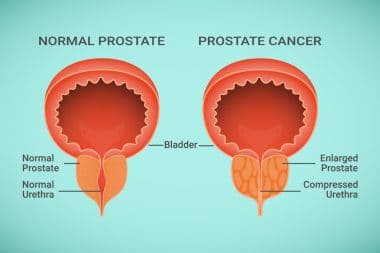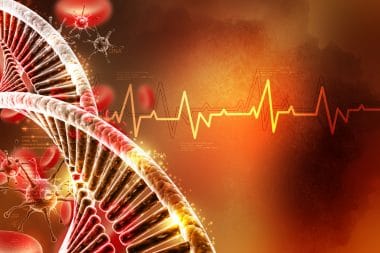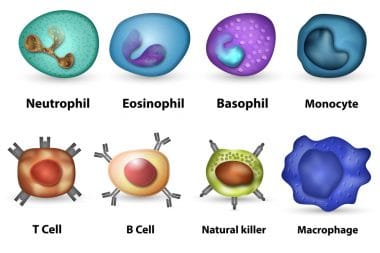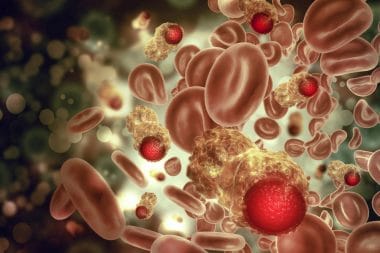A rare type of cancers are neuroendocrine tumors (NETs). These tumors are in the neuroendocrine cells. These cells are throughout the body and the cells have traits of nerve cells and hormone producing cells. Each year in the United States there are 12,000 NETs diagnosed.Â
This is a very rare type of cancer and there are lots of different types because it depends on where the tumors grow in the body. Neuroendocrine tumors can either be slow growing or fast growing. The cause of getting this cancer is unknown. Since there are so many different areas you can end up with these tumors diagnosing, treatment, and symptoms can all differ significantly per person.Â
Types of Neuroendocrine Tumors
There are two main types of NETs. Functional tumors that produce excess hormones, and non-functional tumors that don’t release hormones. Non-functional tumors have a tendency to grow and spread to other parts of the body. Functional tumors are named after the hormone they release. Examples of this are insulinomas which produce too much insulin, or glucagonomas which produce too much glucagon, or glucose raising your blood sugar. Usually neuroendocrine tumors are found in the lungs, appendix, small intestine, pancreas, or rectum. Â
Symptoms
Since the NETs can affect so many different areas in the body there are so many different symptoms you can experience. Not only can this cancer appear multiple locations in the body but symptoms can be different for each individual.Â
General symptoms you can have with either functional or non-functional tumors are pain, a lump under the skin, unusually tired, and unintended weight loss.Â
The trouble with symptoms of neuroendocrine tumors is that they can take a while to show up, allowing the tumors to have a long time to grow or spread. Â
For functional tumors you can experience skin flushing, diarrhea, frequent urination, increase thirst, dizziness, shakiness, or a skin rash.Â
Non-functional NETs can cause diarrhea, heartburn, pain, and a lump under the skin. Since non-functional NETs don’t produce hormones usually your first symptom you may experience is a lump under the skin.Â
If you have NETs in your lungs you could have symptoms of a cough, shortness of breath, wheezing, or chest pain.Â
Pancreas NETs can cause dizziness, weakness, headaches, heartburn, pain in your belly, or a fast heartbeat.Â
Symptoms are not always the first indicator that something is wrong.Â
Diagnosis
Diagnosing NETs will first start with a physical exam. After the initial exam your doctor may want to do blood or urine tests to check your hormone levels to look for unbalanced hormones caused by functional NETs. After that your doctor may also want to do an ultrasound, CT scan, MRI or PET (positron emission tomography) scan to look for placement of tumors and how many there are. In some cases your doctor will want to take a biopsy of the cells to do further testing. Â
Treatment
Once your doctor has more of an idea of where the neuroendocrine tumors are, whether they are functional or non-functional, if it is fast growing or slow growing or if they have spread they will be able to set up a treatment plan.Â
If the tumors are in one location, haven’t started spreading and are large enough your doctor may suggest surgery. Surgery is an option if the doctor thinks he can get all the tumors out at once without leaving any cancer cells behind. After surgery your doctor may also want to put you on chemotherapy. Chemotherapy can be used after surgery if there is fear of the cancer coming back or in place of surgery if the tumor cannot be removed surgically.Â
Your doctor may also want to add targeted drug therapy as well as doing chemotherapy. This will help target the cancer cells specifically in a specific location. Peptide receptor radionuclide therapy is used on advanced tumors. It will target the cancer cells directly with a drug and radioactive substance to kill the cancer cells. Radiation therapy may be an option as well. If you have functional tumors your doctor may put you on some medication to help control the excess hormones the cancer cells are producing.Â
There are lots of ways to treat NETs. Like any type of cancer some NETs are completely treatable while others are too far advanced to cure completely. After diagnosis your doctors will be able to come up with a treatment plan when learning where, what type, how advanced, and how fast the NETs are progressing in your body. This type of cancer is very rare and has lots of ways to be treated. Â
Neuroendrocine cancer is often treated with an individualized plan. Learn more here! #HealthStatus
Peptide receptor radionuclide therapy is used on advanced tumors. It will target the cancer cells directly with a drug and radioactive substance to kill the cancer cells.
Sources:
https://www.cancer.net/cancer-types/neuroendocrine-tumors/introduction
https://www.mayoclinic.org/diseases-conditions/neuroendocrine-tumors/diagnosis-treatment/drc-20465865
https://www.webmd.com/cancer/neuroendocrine-tumors-causes#2
https://www.cancercenter.com/cancer-types/neuroendocrine-tumors/diagnosis-and-detection

- Awarded Gold Seal by the Detox Project as a glyphosate detox solution
- Double-blind trial showed decrease in glyphosate by 74%
- Double-blind trial showed decrease in C-reactive protein by 75%








Reply